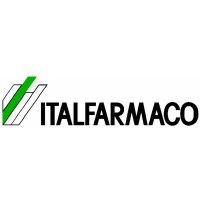预约演示
更新于:2025-09-05
Teicoplanin
替考拉宁
更新于:2025-09-05
概要
基本信息
原研机构 |
最高研发阶段批准上市 |
最高研发阶段(中国)临床前 |
特殊审评孤儿药 (美国)、孤儿药 (欧盟) |
登录后查看时间轴
关联
40
项与 替考拉宁 相关的临床试验NCT06818565
Comparison of Efficacy and Safety of Ceftazidime Avibactam Versus Extended Infusions of High Dose Meropenem in Patients of ACLF With Nosocomial Infections.
Acute on chronic liver failure patients are at high risk for nosocomial infections due to liver dysfunction, which impairs immune responses and increases vulnerability to infections. Key factors contributing to nosocomial infections in ACLF patients include ascites, use of invasive devices, and recent hospitalization, frequent need for broad spectrum antibiotics. Multidrug resistance is a growing issue, making treatment more challenging, common pathogens involved are gram negative bacteria such as Escherichia Coli and Klebsiella pneumoniae. Surveillance data show increasing carbapenem resistant enterobacterales (CRE) infection rates in cirrhotics, with high morbidity and mortality rates. The impact of these nosocomial infections is profound, significantly worsen outcomes in ACLF patients, leading to prolonged hospitalizations, increased health care costs and higher mortality rates. Early detection and effective antibiotic stewardship are essential to manage antibiotic resistance and improve patient outcomes. In this study we aim to compare efficacy and safety of Ceftazidime avibactam versus extended infusions of high dose Meropenem in patients of ACLF with nosocomial infections.
开始日期2025-02-10 |
NCT06426212
Use of Teicoplanin on a Three-weekly Administration in the Complex Outpatient Macroactivity Regimen of Infectious Diseases Unit in the Alessandro Manzoni Hospital (Lecco, Italy)
Teicoplanin is an antibiotic belonging to the class of glycopeptides, in use since 1986. Like its older "classmate" vancomycin, it inhibits protein synthesis by interfering with the synthesis of peptidoglycan, and is active on Gram-positive bacteria such as Staphilococcus spp (including MRSA), Streptococcus spp and Enterococcus spp (both faecalis and faecium).
Teicoplanin is characterized by poor gastrointestinal absorption, which requires intramuscular or intravenous administration; has a binding to plasma proteins greater than 90%; and a high volume of distribution. It reaches high levels in deep tissues (bone, abdomen, lung, kidney, heart) on the contrary it has poor penetration at the central nervous system level; it is approved for the treatment of skin and soft tissue infections, osteo-articular infections, pneumonia, endocarditis, complicated urinary tract infections, peritonitis and bacteremia associated with the aforementioned clinical conditions. Furthermore, teicoplanin has a markedly long half-life (between 30 and 180h) which allows it to be administered even every 48-72h. Dose and duration of treatment should be adjusted according to the location and severity of the infection and based on patient characteristics such as renal function. The possibility of carrying out therapeutic drug monitoring (TDM) allows maintaining plasma levels adequate for the treatment of deep infections (e.g. >20 mg/l for endocarditis) and avoiding overdose.
Thanks to the possibility of administering teicoplanin on a three-weekly schedule, patient access to hospital is further reduced.
The investigators therefore propose a retrospective study to evaluate the clinical effectiveness of teicoplanin therapy according to a three-weekly scheme by comparing its use in the treatment of deep infections (deep seated infections - DSIs) and superficial infections (non-deep seated infections - NDSIs).
Teicoplanin is characterized by poor gastrointestinal absorption, which requires intramuscular or intravenous administration; has a binding to plasma proteins greater than 90%; and a high volume of distribution. It reaches high levels in deep tissues (bone, abdomen, lung, kidney, heart) on the contrary it has poor penetration at the central nervous system level; it is approved for the treatment of skin and soft tissue infections, osteo-articular infections, pneumonia, endocarditis, complicated urinary tract infections, peritonitis and bacteremia associated with the aforementioned clinical conditions. Furthermore, teicoplanin has a markedly long half-life (between 30 and 180h) which allows it to be administered even every 48-72h. Dose and duration of treatment should be adjusted according to the location and severity of the infection and based on patient characteristics such as renal function. The possibility of carrying out therapeutic drug monitoring (TDM) allows maintaining plasma levels adequate for the treatment of deep infections (e.g. >20 mg/l for endocarditis) and avoiding overdose.
Thanks to the possibility of administering teicoplanin on a three-weekly schedule, patient access to hospital is further reduced.
The investigators therefore propose a retrospective study to evaluate the clinical effectiveness of teicoplanin therapy according to a three-weekly scheme by comparing its use in the treatment of deep infections (deep seated infections - DSIs) and superficial infections (non-deep seated infections - NDSIs).
开始日期2024-05-07 |
申办/合作机构- |
EUCTR2023-000005-12-IT
An open-label study to evaluate the safety and tolerability of inhaled Teicoplanin in the treatment of Staphylococcus aureus (including mrsa) infections in CYSTIC FIBROSIS PATIENTS - study to evaluate the safety of inhaled Teicoplanin in the treatment of Stafilococco infections
开始日期2024-02-21 |
100 项与 替考拉宁 相关的临床结果
登录后查看更多信息
100 项与 替考拉宁 相关的转化医学
登录后查看更多信息
100 项与 替考拉宁 相关的专利(医药)
登录后查看更多信息
4,298
项与 替考拉宁 相关的文献(医药)2025-12-31·Emerging Microbes & Infections
Genomic islands and molecular mechanisms relating to drug-resistance in
Clostridioides
(
Clostridium
)
difficile
PCR ribotype 176
Article
作者: Soltesova, Anna ; Pituch, Hanna ; Kuijper, Ed ; Brajerova, Marie ; Balikova Novotna, Gabriela ; Prasad, Suhanya ; Demay, Fanny ; Zikova, Jaroslava ; Novakova, Elena ; Kovarovic, Vojtech ; Krutova, Marcela ; Smits, Wiep Klaas
OBJECTIVES:
To analyse characteristics of Clostridioides difficile PCR ribotype 176 clinical isolates from Poland, the Czech Republic and Slovakia with regard to the differences in its epidemiology.
METHODS:
Antimicrobial susceptibility testing and whole genome sequencing were performed on a selected group of 22 clonally related isolates as determined by multilocus variable-number tandem repeat analysis (n = 509). Heterologous expression and functional analysis of the newly identified methyltransferase were performed.
RESULTS:
Core genome multilocus sequence typing found 10-37 allele differences. All isolates were resistant to fluoroquinolones (gyrA_p. T82I), aminoglycosides with aac(6')-Ie-aph(2'')-Ia in six isolates. Erythromycin resistance was detected in 21/22 isolates and 15 were also resistant to clindamycin with ermB gene. Fourteen isolates were resistant to rifampicin with rpoB_p. R505K or p. R505K/H502N, and five to imipenem with pbp1_p. P491L and pbp3_p. N537K. PnimBG together with nimB_p. L155I were detected in all isolates but only five were resistant to metronidazole on chocolate agar. The cfrE, vanZ1 and cat-like genes were not associated with linezolid, teicoplanin and chloramphenicol resistance, respectively. The genome comparison identified six transposons carrying antimicrobial resistance genes. The ermB gene was carried by new Tn7808, Tn6189 and Tn6218-like. The aac(6')-Ie-aph(2'')-Ia were carried by Tn6218-like and new Tn7806 together with cfrE gene. New Tn7807 carried a cat-like gene. Tn6110 and new Tn7806 contained an RlmN-type 23S rRNA methyltransferase, designated MrmA, associated with high-level macrolide resistance in isolates without ermB gene.
CONCLUSIONS:
Multidrug-resistant C. difficile PCR ribotype 176 isolates carry already described and unique transposons. A novel mechanism for erythromycin resistance in C. difficile was identified.
2025-12-01·DIAGNOSTIC MICROBIOLOGY AND INFECTIOUS DISEASE
The aetiologic agents and resistance rates in community-acquired complicated intra-abdominal infections: Where are we locally?
Article
作者: Gulten, Ezgi ; Ontas, Eray ; Ersoz, Siyar ; Saricaoglu, Elif Mukime ; Akdemir, Irem ; Memikoglu, Kemal Osman ; Cinar, Gule ; Ozturk, Eren
BACKGROUND:
Community-acquired complicated intra-abdominal infections (CA-cIAIs) are a significant global health concern, associated with considerable morbidity and mortality. In regions lacking local epidemiological data, obtaining intraoperative cultures is recommended to guide empirical antibiotic selection. This study aimed to describe the local microbiological profile and resistance patterns in CA-cIAIs.
METHODS:
We retrospectively reviewed adult patients operated for CA-cIAIs at Ankara University Hospital between January 2018 and December 2023. Inclusion criteria included intraoperative or percutaneous drainage sampling and absence of recent hospitalization or abdominal procedures within three months.
RESULTS:
Among 124 surgical patients, cultures were collected from 80 (64.5 %), with 44 (70 %) yielding microbiological growth. A total of 69 pathogens were identified. The most frequent infection sources were cholecystitis (36 %), appendicitis (27 %), and colon perforation (20 %). Escherichia coli (46.4 %), Klebsiella pneumoniae (10.1 %), and Enterococcus faecalis (8.7 %) were the predominant organisms. Extended-spectrum beta-lactamase (ESBL) production was observed in 30.4 % of Gram-negative strains, with notable resistance to third-generation cephalosporins (40 %) and fluoroquinolones (33.3 %). Empirical antibiotics included piperacillin-tazobactam (77.2 %) and teicoplanin (47.7 %). However, their predictive values were low (PPV: 32.4 % and 38.1 %, respectively), with moderate concordance rates.
CONCLUSIONS:
E. coli remains the leading pathogen in CA-cIAIs, but rising resistance rates to key antibiotics pose challenges to empirical treatment. Although piperacillin-tazobactam and teicoplanin were the most commonly used empirical agents, their low PPV underscore the need for improved strategies to optimize empirical therapy. Our findings emphasize the importance of obtaining intraoperative cultures to enable timely de-escalation and appropriate antimicrobial stewardship.
2025-09-03·DRUG AND CHEMICAL TOXICOLOGY
Deciphering the genotoxic and cytotoxic properties of teicoplanin: a combined laboratory and computational investigation
Article
作者: Demir, Şefika Nur ; Berber, Ahmet Ali ; Akinci Kenanoğlu, Nihan ; Aliravci, Işıl Deniz
In this study, the mutagenicity and carcinogenicity of the teicoplanin antibiotic were first investigated using the Vega Hub and Toxtree software through in silico prediction. The cytotoxic and genotoxic effects were evaluated using in vitro assays, including the mitotic index (MI), micronucleus (MN), nuclear division index (NDI), and Comet Assay (CA) in human lymphocytes. In the in vitro studies, both 24-hour and 48-hour exposures were conducted for MI, and teicoplanin significantly decreased MI compared to the control at all concentrations. In addition, a significant increase was detected in the MN frequency compared to the negative control at all concentrations. In the Comet assay, tail length significantly increased compared to the control at all concentrations except for 5.6 µg/mL, while tail moment and comet tail intensity significantly increased at all concentrations compared to the control. In conclusion, within the concentration range used in this study, teicoplanin was found to have cytotoxic and genotoxic effects.
56
项与 替考拉宁 相关的新闻(医药)2025-07-23
·医药速览
今天给大家介绍浙江大学王本和徐峰教授课题组刚刚发表在Nature Biotechnology上的文章,该研究开发了一种新型抗体–聚唾液酸偶联物(APC),可靶向耐甲氧西林金黄色葡萄球菌(MRSA)并诱导其表面钙化,从而杀灭病菌。同时,钙化的细菌能激活宿主先天免疫系统,实现协同清除感染的效果。全文速览:耐甲氧西林金黄色葡萄球菌(MRSA)因其对多种抗生素的耐药性,已成为全球致死性最强的细菌之一。本研究中,研究人员将可识别金黄色葡萄球菌细胞壁磷壁酸(WTA)的单克隆抗体的抗原结合片段与聚唾液酸(PSA)交联,制成抗体–PSA偶联物(APC)。这种偶联物可精准靶向MRSA,并诱导其表面发生钙化,从而干扰其能量代谢和多个关键代谢通路,达到杀菌效果。同时,钙化的MRSA还能促使体内巨噬细胞和单核细胞表达S100A8/S100A9(一种钙卫蛋白复合物),使其进入炎症激活状态,从而提升免疫清除能力。系统性注射APC在小鼠模型中可有效、安全地治疗由MRSA引起的慢性肺部感染和骨髓炎。本研究为耐药细菌和难治性感染的治疗提供了新的思路和方法。全文详解:研究背景&难点:“超级细菌”和多重耐药菌正全球范围内迅速扩散。2019年,全球约有495万人死于抗生素耐药相关疾病,其中排名前三的致死细菌分别是大肠杆菌、金黄色葡萄球菌和肺炎克雷伯菌。MRSA是一种典型的高毒性、广谱耐药且易形成生物膜的致病菌,能在宿主体内形成持续反复的慢性感染。目前国际上推荐使用万古霉素、替考拉宁或利奈唑胺来治疗MRSA,但这些药物的抗药性正在逐渐上升。而且大量使用抗生素还会抑制人体免疫功能,带来诸如发热、肾损伤、血栓性静脉炎等副作用。因此,开发新型治疗方法迫在眉睫。值得注意的是,慢性感染往往伴随局部组织钙化。例如,牙周慢性感染可形成牙结石,尿路感染会导致肾结石,结核感染的肺部也常见钙化灶。虽然这些现象表明免疫系统可能在控制感染中起作用,但“细菌钙化”这一现象在机制上仍未被充分研究。启发于某些微生物能主动诱导钙化(生物矿化)用于环境治理和医疗用途,研究人员尝试主动诱导病原菌钙化,开发抗菌新策略。研究亮点:构建“抗体-聚唾液酸”钙化诱导系统(APC)为实现靶向钙化,研究团队设计了一种名为抗体–聚唾液酸偶联物(Antibody–Polysialic acid Conjugate, 简称APC),其关键组成包括:靶向模块:采用识别金黄色葡萄球菌细胞壁磷壁酸(WTA)的抗体Fab片段,具有良好特异性;功能模块:聚唾液酸(PSA)作为可负载钙离子的聚合物,可促进细菌表面钙离子富集;协同作用:通过APC结合在细菌表面,聚集钙离子,诱导细菌发生表面钙化反应,进而抑制其代谢活性。实验证实,APC可在体内外特异性识别MRSA并诱导其发生钙化,形成“钙壳”,显著抑制细菌呼吸链活性、能量代谢和转运功能。钙化直接抑制细菌活性与毒力表达在对钙化细菌进行转录组和代谢组分析后,研究团队发现细菌在钙化后能量代谢严重受损,ATP生成减少,NAD+/NADH比例失衡。多种毒力因子(如α溶血素)、群体感应系统、双组分调控系统表达显著下调。表面蛋白表达受阻,从而减少其与宿主组织结合及免疫逃逸能力。此外,研究还发现钙化后细菌产生大量cAMP,可能是其应激应答机制的表现。这些研究表明钙化可同时造成细菌“生理瘫痪”与“毒力沉默”。钙化菌激活免疫系统,促使炎症巨噬细胞聚集更令人惊喜的是,钙化细菌还表现出显著的免疫激活能力。可显著诱导S100A8/S100A9(钙卫蛋白)表达,这是一种关键的先天免疫活化因子;增强巨噬细胞的M1型极化,促进促炎细胞因子的分泌;增强吞噬能力,显著提高对细菌的清除效率;抑制MRSA毒力因子对免疫细胞功能的破坏。研究还通过钙卫蛋白基因敲除细胞进一步证实,S100A8/S100A9的表达是钙化菌介导免疫激活的关键因素。这一发现类似于自然界中结石诱导炎症反应的过程,例如钙盐结晶刺激肾组织炎症反应、骨关节中钙化诱导滑膜免疫激活等。小鼠模型验证APC对慢性感染疗效显著研究团队在小鼠的慢性肺部感染模型和慢性骨髓炎模型中进行了验证实验。研究发现APC治疗能显著降低感染灶细菌负荷;诱导明显的细菌表面钙化(通过micro-CT、组织染色观察);显著提高存活率,缓解组织炎症;在高钙饮食支持下,钙化效率和治疗效果进一步提高。更重要的是,血钙水平始终维持在生理范围,未出现钙中毒等安全性问题。总结&展望:这项研究首次在体内实现了人工诱导细菌钙化,具有多方面创新亮点,包括:首次提出“钙化杀菌+免疫激活”双通路治疗策略;构建新型APC,具备靶向性强、功能明确、体内稳定等优点;验证MRSA临床分离株均可响应钙化治疗,无论是否耐药;钙化菌激活S100A8/S100A9表达,调动先天免疫系统,克服免疫逃逸问题;在慢性肺炎和骨髓炎模型中显著提高治疗效果,具备良好安全性;研究还指出,尽管结果令人鼓舞,但仍存在几点待改进之处:当前APC剂量相对较高,后续需进一步优化结构以降低免疫原性;钙卫蛋白在体内的功能机制仍需通过S100a8/S100a9敲除小鼠深入验证;若能开发靶向其他细菌表面分子的类似策略,有望拓展至其他耐药菌种。参考文献&原文链接:Inducing bacterial calcification for systematic treatment and immunomodulation against methicillin-resistant Staphylococcus aureushttps://doi.org/10.1038/s41587-025-02736-3推文用于传递知识,如因版权等有疑问,请于本文刊发30日内联系医药速览。原创内容未经授权,禁止转载至其他平台。有问题可发邮件至yong_wang@pku.edu.cn获取更多信息。©2021 医药速览 保留所有权利往期链接“小小疫苗”养成记 | 医药公司管线盘点 人人学懂免疫学| 人人学懂免疫学(语音版)综述文章解读 | 文献略读 | 医学科普|医药前沿笔记PROTAC技术| 抗体药物| 抗体药物偶联-ADC核酸疫苗 | CAR技术| 化学生物学温馨提示医药速览公众号目前已经有近12个交流群(好学,有趣且奔波于医药圈人才聚集于此)。进群加作者微信(yiyaoxueshu666)或者扫描公众号二维码添加作者,备注“姓名/昵称-企业/高校-具体研究领域/专业”,此群仅为科研交流群,非诚勿扰。简单操作即可星标⭐️医药速览,第一时间收到我们的推送①点击标题下方“医药速览” ②至右上角“...” ③点击“设为星标
2025-07-15
·医药代表
做这 68 个品种的朋友可以松口气了。如大家所见,今日(7 月 15 日),据国家医保局消息,第十一批国家组织药品集中采购工作日前启动,经过三阶段筛选,55 个品种纳入第十一批集采报量范围。这 55 个品种名单可以浏览 MRCLUB 今日另一则推送。除此之外,国家联采办还公布了《过评数量达到条件未纳入第十一批集采的药品》,共有 68 个品种,具体如下:#品种名称1替米沙坦氨氯地平口服常释剂型2氨溴索吸入剂3奥美拉唑碳酸氢钠口服液体剂4利丙双卡因软膏剂5拉米夫定口服常释剂型6特地唑胺口服常释剂型7丙戊酸钠口服液体剂8美金刚口服溶液剂9溴莫尼定滴眼剂10林可霉素注射剂11福多司坦口服液体剂12氯雷他定口服液体剂13平衡盐溶液剂14他氟前列素滴眼剂15硝酸甘油口服常释剂型16伐地那非口服常释剂型17利托那韦口服常释剂型18曲伏前列素滴眼剂19索磷布韦口服常释剂型20依托咪酯中/长链脂肪乳注射剂21左乙拉西坦缓释控释剂型22ω-3 脂肪酸乙酯 90 口服常释剂型23恩曲他滨丙酚替诺福韦口服常释剂型24恩替卡韦口服溶液剂25氯化钾口服液体剂26氯苯那敏注射剂27聚乙二醇(3350)口服散剂28乳果糖口服液体剂29氨溴特罗口服液体剂30氨溴索口服液体剂31乙酰半胱氨酸吸入剂32米诺地尔外用液体剂33普拉洛芬滴眼剂34布洛芬口服液体剂35溴芬酸钠滴眼剂36左西替利嗪口服液体剂37丙卡特罗口服液体剂38莫匹罗星软膏剂39西甲硅油口服液体剂40他克莫司软膏剂41左卡尼汀口服液体剂42聚乙烯醇滴眼剂43羧甲司坦口服液体剂44七氟烷吸入用溶液剂45氮䓬斯汀滴眼剂46利培酮口服液体剂47腹膜透析液注射剂48复方氨基酸注射剂49沙库巴曲缬沙坦口服常释剂型50恩扎卢胺口服常释剂型51阿格列汀口服常释剂型52伏诺拉生口服常释剂型53吲哚布芬口服常释剂型54碘普罗胺注射剂55甲氨蝶呤注射剂56阿糖胞苷注射剂57拉莫三嗪口服常释剂型58曲普瑞林注射剂59西曲瑞克注射剂60麦考酚钠口服常释剂型61万古霉素注射剂62帕利哌酮缓释控释剂型63艾多沙班口服常释剂型64头孢他啶阿维巴坦注射剂65替考拉宁注射剂66亚胺培南西司他丁注射剂67厄他培南注射剂68中/长链脂肪乳(C6-24)注射剂以上 68 个过评数量达标但未列入第十一批国采的原因多样,如采购金额小于 1 亿元、竞争格局不够充分、存在专利侵权高风险、临床使用风险高、重点的抗管药物、同时存在新老批件,等等。具体原因可以浏览下面原始文件:相关阅读:官宣了!单国洪加入百济神州创新药要起飞啦!国家发布目录准入、挂网、进院支持政策2025国家医保药品目录调整工作方案来了9900万“攻坚”基金加持!齐鲁制药牵手国自然开新局一药企办公点遭百人“围攻”大三甲医院院长,多次违规吃喝被通报确认了!上市药企副总裁被留置官宣!这家跨国药企要更名了药企董事被查!器械老板行贿被罚药企销售挪用货款三年,支付流水露马脚反制!部分进口医疗器械限制采购2024年度中国医药工业百强(名单)央视暗访,“网红医生”背后的生意经柯玉雄加入GSK,北大医药新总裁确定钱江就任百时美施贵宝中国总经理用AI开发新药,又一家外企行动了两家药企公开致歉!四十年,一家跨国药企的中国故事超10亿元大品种,多家药企被停采两省卫健委,财务人员被查医药人变身公益侠,全球公益接力正式版来了!2025国谈时间确定2024年全球药品销售20强金赛药业全国招募火热启动百万人从社会“消失”,药企VR破局官宣了,国药股份董事长确定康方生物代表被查,官方结果公布一药企总裁被罚1500万,10年禁入MRCLUB原创作者招募中数十万精准会员每日阅读,助您快速提升个人品牌,扩大在医药行业及社会化媒体的影响力!(详情请访问网站http://wemr.club)医药代表 伴您成长!
带量采购
2025-07-06
·信狐药迅
每周药品注册获批数据,分门别类呈现,一目了然。(6.30-7.6)新药上市申请药品名称企业注册分类受理号硫酸艾玛昔替尼片江苏恒瑞医药股份有限公司1CXHS2400089酒石酸泰贝西利胶囊贝达药业股份有限公司1CXHS2400039玛仕度肽注射液信达生物制药(苏州)有限公司1CXHS2400010玛仕度肽注射液信达生物制药(苏州)有限公司1CXHS2400009玛仕度肽注射液信达生物制药(苏州)有限公司1CXHS2400008注射用双利司他广州必贝特医药股份有限公司1CXHS2300092SHR8058滴眼液成都盛迪医药有限公司1CXHS2300021棕榈酸帕利哌酮注射液(II)山东绿叶制药有限公司2.2CXHS2400066棕榈酸帕利哌酮注射液(II)山东绿叶制药有限公司2.2CXHS2400065棕榈酸帕利哌酮注射液(II)山东绿叶制药有限公司2.2CXHS2400064棕榈酸帕利哌酮注射液(II)山东绿叶制药有限公司2.2CXHS2400063棕榈酸帕利哌酮注射液(II)山东绿叶制药有限公司2.2CXHS2400062棕榈酸帕利哌酮注射液(II)山东绿叶制药有限公司2.2CXHS2400061盐酸替扎尼定口服溶液四川科瑞德制药股份有限公司2.2CXHS2400006盐酸替扎尼定口服溶液四川科瑞德制药股份有限公司2.2CXHS2400005HQ-0124片上海则正生物医药股份有限公司2.2CXHS2300117HQ-0124片上海则正生物医药股份有限公司2.2CXHS2300116赛沃替尼片和记黄埔医药(上海)有限公司2.4CXHS2400134赛沃替尼片和记黄埔医药(上海)有限公司2.4CXHS2400133伯瑞替尼肠溶胶囊北京浦润奥生物科技有限责任公司2.4CXHS2400131伯瑞替尼肠溶胶囊北京浦润奥生物科技有限责任公司2.4CXHS2400132盐酸安罗替尼胶囊正大天晴药业集团股份有限公司2.4CXHS2400108盐酸安罗替尼胶囊正大天晴药业集团股份有限公司2.4CXHS2400107盐酸安罗替尼胶囊正大天晴药业集团股份有限公司2.4CXHS2400106苯环喹溴铵鼻喷雾剂银谷制药有限责任公司2.4CXHS2400083苯环喹溴铵鼻喷雾剂银谷制药有限责任公司2.4CXHS2400082注射用金纳单抗长春金赛药业有限责任公司1CXSS2400040注射用金纳单抗长春金赛药业有限责任公司1CXSS2400039注射用苏维西塔单抗江苏先声生物制药有限公司1CXSS2400022新药临床申请药品名称企业注册分类受理号ABP-745片杭州新元素药业有限公司1CXHL2500418ABP-745片杭州新元素药业有限公司1CXHL2500417ABP-745片杭州新元素药业有限公司1CXHL2500416177Lu-HX02注射液核欣(苏州)医药科技有限公司1CXHL2500413HSK21542注射液海思科医药集团股份有限公司1CXHL2500410KYS2301凝胶江苏康缘药业股份有限公司1CXHL2500407KYS2301凝胶江苏康缘药业股份有限公司1CXHL2500406KYS2301凝胶江苏康缘药业股份有限公司1CXHL2500405KC1086片北京康辰药业股份有限公司1CXHL2500404KC1086片北京康辰药业股份有限公司1CXHL2500403HS387片浙江海正药业股份有限公司1CXHL2500402HS387片浙江海正药业股份有限公司1CXHL2500401HS387片浙江海正药业股份有限公司1CXHL2500400HSK45030分散片西藏海思科制药有限公司1CXHL2500391HSK45030分散片西藏海思科制药有限公司1CXHL2500390102D-6干混悬剂卡文迪许(泰州)药业有限公司1CXHL2500389BW-20507注射液上海舶望制药有限公司1CXHL2500388HRS-9821吸入粉雾剂广东恒瑞医药有限公司1CXHL2500377抗菌肽PL-3301口腔凝胶江苏普莱医药生物技术有限公司1CXHL2500381抗菌肽PL-3301口腔凝胶江苏普莱医药生物技术有限公司1CXHL2500380注射用SBK009成都施贝康生物医药科技有限公司1CXHL2500372XLH01片山东润中药业有限公司1CXHL2500367XLH01片山东润中药业有限公司1CXHL2500366石杉碱甲口服溶液万邦德制药集团有限公司2.2CXHL2500409BCM1129上海云晟研新生物科技有限公司2.2CXHL2500408CX001缓释片重庆华森制药股份有限公司2.2CXHL2500394CX001缓释片重庆华森制药股份有限公司2.2CXHL2500393CX001缓释片重庆华森制药股份有限公司2.2CXHL2500392LN2222山东新时代药业有限公司2.2CXHL2500384LN2222山东新时代药业有限公司2.2CXHL2500383BCM957上海云晟研新生物科技有限公司2.2CXHL2500362盐酸羟钴胺注射液石药集团中奇制药技术(石家庄)有限公司2.4CXHL2500382四价肠道病毒灭活疫苗(Vero细胞)国药中生生物技术研究院有限公司1.4CXSL2500283注射用SKB518四川科伦博泰生物医药股份有限公司1CXSL2500334PM8002注射液普米斯生物技术(珠海)有限公司1CXSL2500333注射用BL-B01D1成都百利多特生物药业有限责任公司1CXSL2500332CTM012注射液乐普创一生物科技(上海)有限公司1CXSL2500330注射用ICP-B794北京诺诚健华医药科技有限公司1CXSL2500329注射用TQB2934正大天晴药业集团南京顺欣制药有限公司1CXSL2500328注射用BGB-B2033广州百济神州生物制药有限公司1CXSL2500327GR1803注射液智翔(上海)医药科技有限公司1CXSL2500325注射用QLS5133齐鲁制药有限公司1CXSL2500326XW003注射液杭州先为达生物科技股份有限公司1CXSL2500321XW003注射液杭州先为达生物科技股份有限公司1CXSL2500320注射用XTL6001上海西泰利生物医药科技有限公司1CXSL2500322AK2024 注射液安徽安科生物工程(集团)股份有限公司1CXSL2500318J002温州医科大学1CXSL2500315J002温州医科大学1CXSL2500314HF158K1杭州高田生物医药有限公司1CXSL2500312注射用HY05350四川汇宇海玥医药科技有限公司1CXSL2500316SSS55注射液沈阳三生制药有限责任公司1CXSL2500310注射用HS-20093上海翰森生物医药科技有限公司1CXSL2500302SHR-2173注射液广东恒瑞医药有限公司1CXSL2500298SCG101-V自体T细胞注射液星源德生物医药(上海)有限公司1CXSL2500286舒欣瑞纳注射液江苏贵琼药业有限公司1CXSL2500280KM1溶瘤痘苗病毒注射液深圳市华药康明生物药业有限责任公司1CXSL2500274JD012-CEL注射液北京景达生物科技有限公司1CXSL2500276注射用重组A型肉毒毒素(Sf9细胞,150 kD天然氨基酸序列)苏州若弋生物科技有限公司2.4CXSL2500309仿制药申请药品名称企业注册分类受理号氨磺必利注射液南京恩泰医药科技有限公司3CYHS2402245尼麦角林片海南斯达制药有限公司3CYHS2402142盐酸普罗帕酮注射液海南慧通生物医药科技有限公司3CYHS2402137西格列汀二甲双胍缓释片河南中杰药业有限公司3CYHS2402158西格列汀二甲双胍缓释片河南中杰药业有限公司3CYHS2402157布比卡因脂质体注射液江苏恒瑞医药股份有限公司3CYHS2401989盐酸纳美芬注射液海南爱科制药有限公司3CYHS2401479注射用尼可地尔湖南赛隆药业(长沙)有限公司3CYHS2401409腺苷钴胺胶囊舒美奇成都生物科技有限公司3CYHS2401215注射用奥氮平齐鲁制药有限公司3CYHS2401024盐酸曲唑酮片江西科睿药业有限公司3CYHS2400983二羟丙茶碱注射液石家庄四药有限公司3CYHS2400931钠钾镁钙注射用浓溶液辰欣药业股份有限公司3CYHS2400820盐酸甲氧氯普胺注射液海南天盛保和生物科技有限公司3CYHS2400753维生素B6注射液海南元盈医药科技有限公司3CYHS2400733腺苷钴胺胶囊福建古田药业有限公司3CYHS2400699二羟丙茶碱注射液河北龙海药业有限公司3CYHS2400690特利加压素注射液海南中和药业股份有限公司3CYHS2400670呋塞米片石家庄四药有限公司3CYHS2400646尼麦角林片浙江赛默制药有限公司3CYHS2400517复方维生素C聚乙二醇(3350)钠钾散杨凌科森生物制药有限责任公司3CYHS2400530盐酸甲氧氯普胺注射液北京远方通达医药技术有限公司3CYHS2400468盐酸丙卡特罗口服溶液合肥远志医药科技开发有限公司3CYHS2400455盐酸左沙丁胺醇雾化吸入溶液山东达因金控儿童制药有限公司3CYHS2400429氨基己酸注射液四环医药(郑州)有限公司3CYHS2400362盐酸甲氧氯普胺注射液河北凯威制药有限责任公司3CYHS2400373盐酸曲唑酮片西安远大科创医药科技有限公司3CYHS2400283法莫替丁注射液四川奇裕医药科技有限公司3CYHS2400237盐酸羟考酮片宜昌人福药业有限责任公司3CYHS2400213盐酸羟考酮片宜昌人福药业有限责任公司3CYHS2400212苯磺酸氨氯地平口腔崩解片广东万泰科创药业有限公司3CYHS2400205苯磺酸氨氯地平口腔崩解片广东万泰科创药业有限公司3CYHS2400204二羟丙茶碱注射液石家庄凯达生物工程有限公司3CYHS2400174尼麦角林片浙江华海药业股份有限公司3CYHS2400104尼麦角林片浙江华海药业股份有限公司3CYHS2400103盐酸多巴酚丁胺注射液武汉久安药业有限公司3CYHS2400094利伐沙班口腔崩解片广东粤和泽药物研究有限公司3CYHS2400093利伐沙班口腔崩解片广东粤和泽药物研究有限公司3CYHS2400092硫酸特布他林口服溶液合肥国药诺和药业有限公司3CYHS2400090硫酸特布他林口服溶液合肥国药诺和药业有限公司3CYHS2400089盐酸多巴酚丁胺注射液山西德元堂药业有限公司3CYHS2400068聚普瑞锌颗粒湖南诺纳医药科技有限公司3CYHS2400038氯化钾颗粒安徽佳和药业有限公司3CYHS2400018盐酸普萘洛尔注射液福州基石医药科技有限公司3CYHS2303682维生素B6注射液广州绿十字制药股份有限公司3CYHS2303681注射用尼可地尔河北龙海药业有限公司3CYHS2303672盐酸普罗帕酮注射液华夏生生药业(北京)有限公司3CYHS2303627头孢克肟胶囊浙江巨泰药业有限公司3CYHS2303554盐酸多巴胺注射液江西泰吉立生物医药科技有限公司3CYHS2303453腺苷钴胺胶囊福安药业集团宁波天衡制药有限公司3CYHS2303463地氯雷他定口服溶液湖北凯纳药业有限公司3CYHS2303473地氯雷他定口服溶液山东简道制药有限公司3CYHS2303428二羟丙茶碱注射液泽田(山东)药业有限公司3CYHS2303383注射用盐酸罗沙替丁醋酸酯福建天泉药业股份有限公司3CYHS2303344盐酸溴己新口服溶液四川天杏汇医药科技有限公司3CYHS2303343加替沙星滴眼液广州仁恒医药科技股份有限公司3CYHS2303293托拉塞米注射液湖南赛隆药业(长沙)有限公司3CYHS2303262托拉塞米注射液湖南赛隆药业(长沙)有限公司3CYHS2303261氯化钾颗粒浙江佰奥医药科技有限公司3CYHS2303232氯化钾颗粒浙江佰奥医药科技有限公司3CYHS2303231盐酸甲氧氯普胺注射液南京卡文迪许生物工程技术有限公司3CYHS2303190盐酸利多卡因注射液广州艾格生物科技有限公司3CYHS2303113盐酸甲氧氯普胺注射液海南紫程众投生物科技有限公司3CYHS2303024叶酸片沈阳天邦药业有限公司3CYHS2303033富马酸酮替芬滴眼液成都慧德医药科技有限公司3CYHS2303005氯化钾颗粒河北华晨药业集团有限公司3CYHS2302961氯化钾颗粒河北华晨药业集团有限公司3CYHS2302960硫酸阿托品注射液湖南海誓生物医药有限公司3CYHS2302875对乙酰氨基酚颗粒石家庄四药有限公司3CYHS2302836氨溴特罗口服溶液圣嘉(滨海)生物医药科技有限公司3CYHS2302732盐酸艾司洛尔注射液河南润弘制药股份有限公司3CYHS2302685氨氯地平贝那普利胶囊上海安必生制药技术有限公司3CYHS2302663硫酸镁注射液海南全盈药业有限公司3CYHS2302618羧甲司坦糖浆安徽茂康药业有限公司3CYHS2302535羧甲司坦糖浆安徽茂康药业有限公司3CYHS2302534唑来膦酸注射液山东百诺医药股份有限公司3CYHS2302489立他司特滴眼液成都康弘药业集团股份有限公司3CYHS2302444头孢克肟颗粒重庆吉斯瑞制药有限责任公司3CYHS2302131聚乙二醇钠钾散济川药业集团有限公司3CYHS2300952聚乙二醇钠钾散济川药业集团有限公司3CYHS2300934塞来昔布胶囊晖致制药(大连)有限公司4CYHS2403344乳果糖口服溶液安徽四环科宝制药有限公司4CYHS2402714醋酸来法莫林片住友制药(苏州)有限公司4CYHS2402723艾塞那肽注射液成都圣诺生物制药有限公司4CYHS2402713氨甲环酸片浙江赛默制药有限公司4CYHS2402437盐酸氨溴索口服溶液四川成都同道堂制药有限责任公司4CYHS2402394布瑞哌唑片南京正科医药股份有限公司4CYHS2402272布瑞哌唑片南京正科医药股份有限公司4CYHS2402271布瑞哌唑片南京正科医药股份有限公司4CYHS2402270二甲硅油乳剂浙江恒研医药科技有限公司4CYHS2402097醋酸来法莫林注射用浓溶液住友制药(苏州)有限公司4CYHS2401817二甲硅油乳剂浙江赛默制药有限公司4CYHS2401645二甲硅油乳剂浙江赛默制药有限公司4CYHS2401644二甲硅油乳剂浙江赛默制药有限公司4CYHS2401643帕利哌酮缓释片合肥华方医药科技有限公司4CYHS2401470帕利哌酮缓释片合肥华方医药科技有限公司4CYHS2401469马来酸氟伏沙明片辰欣药业股份有限公司4CYHS2401386腺苷注射液大道隆达(北京)医药科技发展有限公司4CYHS2401402富马酸卢帕他定片浙江赛默制药有限公司4CYHS2401353盐酸贝尼地平片北京福元医药股份有限公司4CYHS2401301恩格列净片深圳奥萨制药有限公司4CYHS2401255马来酸氟伏沙明片安徽金太阳生化药业有限公司4CYHS2401204马来酸氟伏沙明片安徽金太阳生化药业有限公司4CYHS2401203依巴斯汀片华益药业科技(安徽)有限公司4CYHS2401182硫酸氨基葡萄糖胶囊德全药品(江苏)股份有限公司4CYHS2401184普拉洛芬滴眼液苏州乐珠制药有限公司4CYHS2401183盐酸阿莫罗芬搽剂江苏知原药业股份有限公司4CYHS2401177哌柏西利胶囊山东新时代药业有限公司4CYHS2401160哌柏西利胶囊山东新时代药业有限公司4CYHS2401159哌柏西利胶囊山东新时代药业有限公司4CYHS2401158恩格列净片烟台鲁银药业有限公司4CYHS2401086复方电解质注射液(II)辰欣药业股份有限公司4CYHS2401039复方电解质注射液(II)辰欣药业股份有限公司4CYHS2401038非布司他片广东恒健制药有限公司4CYHS2400988非布司他片广东恒健制药有限公司4CYHS2400987他克莫司胶囊海南合瑞制药股份有限公司4CYHS2400979他克莫司胶囊海南合瑞制药股份有限公司4CYHS2400978马来酸阿伐曲泊帕片杭州九源基因工程股份有限公司4CYHS2400974马来酸氟伏沙明片安徽艾立德制药有限公司4CYHS2400945苯磺酸氨氯地平片华益药业科技(安徽)有限公司4CYHS2400840苯磺酸氨氯地平片华益药业科技(安徽)有限公司4CYHS2400839富马酸福莫特罗吸入溶液石家庄四药有限公司4CYHS2400837吉非替尼片山东鲁抗医药股份有限公司4CYHS2400813盐酸伊立替康注射液吉斯美(武汉)制药有限公司4CYHS2400819盐酸伊立替康注射液吉斯美(武汉)制药有限公司4CYHS2400818吸入用乙酰半胱氨酸溶液朗天药业(湖北)有限公司4CYHS2400800盐酸贝尼地平片北京福元医药股份有限公司4CYHS2400773乳果糖口服溶液成都倍特得诺药业有限公司4CYHS2400769乳果糖口服溶液成都倍特得诺药业有限公司4CYHS2400768注射用替考拉宁泊诺(天津)创新医药研究有限公司4CYHS2400762甲磺酸多沙唑嗪缓释片南京易亨制药有限公司4CYHS2400721苹果酸舒尼替尼胶囊广州科锐特生物科技有限公司4CYHS2400719孟鲁司特钠颗粒天大药业(珠海)有限公司4CYHS2400723比索洛尔氨氯地平片北京福元医药股份有限公司4CYHS2400698盐酸贝尼地平片山西鑫煜制药股份有限公司4CYHS2400672盐酸贝尼地平片山西鑫煜制药股份有限公司4CYHS2400671洛索洛芬钠凝胶贴膏江苏万高药业股份有限公司4CYHS2400648盐酸西替利嗪滴剂福建大谱生物医药有限公司4CYHS2400645拉考沙胺注射液吉林天成制药有限公司4CYHS2400571玻璃酸钠滴眼液黑龙江省知润药业有限公司4CYHS2400589盐酸乌拉地尔注射液天方药业有限公司4CYHS2400601盐酸乌拉地尔注射液天方药业有限公司4CYHS2400600富马酸福莫特罗吸入溶液南京海纳制药有限公司4CYHS2400547苯磺酸氨氯地平片上海华源安徽仁济制药有限公司4CYHS2400521左氧氟沙星滴眼液龙吉川(宁夏)医药科技发展有限公司4CYHS2400515替米沙坦氨氯地平片湖南慧泽生物医药科技有限公司4CYHS2400458伏立康唑干混悬剂南京易亨制药有限公司4CYHS2400447利丙双卡因乳膏湖南状元制药有限公司4CYHS2400432利丙双卡因乳膏江苏盈科生物制药有限公司4CYHS2400402乙磺酸尼达尼布软胶囊沈阳红旗制药有限公司4CYHS2400377乙磺酸尼达尼布软胶囊沈阳红旗制药有限公司4CYHS2400376脂肪乳注射液(C14-24)江苏盈科生物制药有限公司4CYHS2400379脂肪乳注射液(C14-24)江苏盈科生物制药有限公司4CYHS2400356左氧氟沙星滴眼液合肥利民制药有限公司4CYHS2400326乳果糖口服溶液重庆市义力医药科技有限公司4CYHS2400321乳果糖口服溶液重庆市义力医药科技有限公司4CYHS2400320西罗莫司凝胶华东医药(西安)博华制药有限公司4CYHS2400294伊布替尼胶囊杭州中美华东制药有限公司4CYHS2400274盐酸伊伐布雷定片山东淄博新达制药有限公司4CYHS2400236注射用美罗培南重庆药友制药有限责任公司4CYHS2400242注射用美罗培南重庆药友制药有限责任公司4CYHS2400241二甲双胍恩格列净片(VI)常州市阳光药业有限公司4CYHS2400222二甲双胍恩格列净片(V)常州市阳光药业有限公司4CYHS2400221二甲双胍恩格列净片(I)常州市阳光药业有限公司4CYHS2400220培哚普利吲达帕胺片国药集团工业有限公司4CYHS2400214孟鲁司特钠咀嚼片迪沙药业集团有限公司4CYHS2400156左氧氟沙星滴眼液亚邦医药股份有限公司4CYHS2400154注射用头孢唑肟钠海南海灵化学制药有限公司4CYHS2400121注射用头孢唑肟钠海南海灵化学制药有限公司4CYHS2400120他克莫司缓释胶囊广东粤和泽药物研究有限公司4CYHS2400137乳果糖口服溶液江苏开元药业有限公司4CYHS2400125枸橼酸西地那非口腔崩解片浙江九洲生物医药有限公司4CYHS2400013盐酸阿莫罗芬搽剂福元药业有限公司4CYHS2400005注射用替考拉宁浙江普利药业有限公司4CYHS2303679利丙双卡因乳膏福元药业有限公司4CYHS2303632莫匹罗星软膏浙江百代医药科技有限公司4CYHS2303609替米沙坦氨氯地平片上海青平药业有限公司4CYHS2303620注射用头孢他啶阿维巴坦钠海南通用三洋药业有限公司4CYHS2303565苯磺酸氨氯地平片浙江昂利康制药股份有限公司4CYHS2303562苯磺酸氨氯地平片浙江昂利康制药股份有限公司4CYHS2303561富马酸伏诺拉生片重庆迪康长江制药有限公司4CYHS2303560富马酸伏诺拉生片重庆迪康长江制药有限公司4CYHS2303559复方托吡卡胺滴眼液广东众生药业股份有限公司4CYHS2303547吗啉硝唑氯化钠注射液四川上善六经医药科技有限公司4CYHS2303528利格列汀片鲁南贝特制药有限公司4CYHS2303540布洛芬混悬液浙江国光生物制药股份有限公司4CYHS2303491吗啉硝唑氯化钠注射液广东科伦药业有限公司4CYHS2303475吡美莫司乳膏海南皇隆制药股份有限公司4CYHS2303408左卡尼汀口服溶液辽宁诺维诺制药股份有限公司4CYHS2303420左卡尼汀口服溶液辽宁诺维诺制药股份有限公司4CYHS2303419吗啉硝唑氯化钠注射液成都倍特药业股份有限公司4CYHS2303389阿戈美拉汀片齐鲁制药有限公司4CYHS2303379吗啉硝唑氯化钠注射液黑龙江博宇制药有限公司4CYHS2303365美沙拉秦肠溶片石药集团欧意药业有限公司4CYHS2303348盐酸莫西沙星滴眼液石家庄格瑞药业有限公司4CYHS2303233阿托伐他汀钙片恒昌(广州)新药研究有限公司4CYHS2302964阿托伐他汀钙片恒昌(广州)新药研究有限公司4CYHS2302963复方氨基酸注射液(18AA-IX)华润双鹤药业股份有限公司4CYHS2302926注射用磷酸特地唑胺重庆圣华曦药业股份有限公司4CYHS2302924利奈唑胺片海口市制药厂有限公司4CYHS2302666复方聚乙二醇电解质散(III)南京海纳制药有限公司4CYHS2302570替米沙坦氨氯地平片抚松县中药有限责任公司4CYHS2302532盐酸莫西沙星片珠海润都制药股份有限公司4CYHS2302288依托咪酯乳状注射液本溪恒康制药有限公司4CYHS2301715二十碳五烯酸乙酯软胶囊齐鲁制药有限公司4CYHS2301609氟比洛芬凝胶贴膏乐明药业(苏州)有限公司4CYHS2300957环孢素滴眼液(III)广东众生药业股份有限公司4CYHS2200936精氨酸布洛芬山东新华制药股份有限公司CYHS2360825注射用重组人凝血因子VIIa正大天晴药业集团南京顺欣制药有限公司3.4CXSS2300097盐酸甲哌卡因注射液瑞阳制药股份有限公司3CYHL2500086艾考糊精腹膜透析液青岛力腾医药科技有限公司4CYHL2500079茚达特罗格隆溴铵吸入粉雾剂长风药业股份有限公司4CYHL2500074人凝血因子IX远大蜀阳生命科学(成都)有限公司3.2CXSL2500277KH813注射液成都康弘生物科技有限公司3.3CXSL2500303进口申请药品名称企业注册分类受理号注射用氨曲南阿维巴坦钠Pfizer Europe MA EEIG2.3JXHS2300103替尔泊肽注射液Eli Lilly and Company2.4JXHS2400068替尔泊肽注射液Eli Lilly and Company2.4JXHS2400067替尔泊肽注射液Eli Lilly and Company2.4JXHS2400066替尔泊肽注射液Eli Lilly and Company2.4JXHS2400065注射用六氟化硫微泡Bracco International B.V.2.4JXHS2400060维奈克拉片AbbVie Inc.5.1JXHS2400072维奈克拉片AbbVie Inc.5.1JXHS2400071维奈克拉片AbbVie Inc.5.1JXHS2400070恩考芬尼胶囊PIERRE FABRE MEDICAMENT5.1JXHS2400062非那雄胺喷雾剂Polichem S.A.5.1JXHS2400010沙美特罗替卡松吸入粉雾剂M/s. Cipla Limited5.2JYHS2300110沙美特罗替卡松吸入粉雾剂M/s. Cipla Limited5.2JYHS2300109沙美特罗替卡松吸入粉雾剂M/s. Cipla Limited5.2JYHS2300108孟鲁司特钠片Hetero Labs Limited5.2JYHS2300047硫酸阿扎那韦胶囊阿拉宾度制药有限公司5.2JXHS1900123国;JXHS1900123硫酸阿扎那韦胶囊阿拉宾度制药有限公司5.2JXHS1900124国;JXHS1900124Orforglipron片Eli Lilly and Company1JXHL2500099Orforglipron片Eli Lilly and Company1JXHL2500098Orforglipron片Eli Lilly and Company1JXHL2500097Orforglipron片Eli Lilly and Company1JXHL2500096Orforglipron片Eli Lilly and Company1JXHL2500095Orforglipron片Eli Lilly and Company1JXHL2500094Orforglipron片Eli Lilly and Company1JXHL2500093Orforglipron片Eli Lilly and Company1JXHL2500092Orforglipron片Eli Lilly and Company1JXHL2500091Orforglipron片Eli Lilly and Company1JXHL2500090Orforglipron片Eli Lilly and Company1JXHL2500089Orforglipron片Eli Lilly and Company1JXHL2500088BI 690517片Boehringer Ingelheim International GmbH1JXHL2500073BI 690517片Boehringer Ingelheim International GmbH1JXHL2500072BI1815368 片Boehringer Ingelheim International GmbH1JXHL2500075BI1815368 片Boehringer Ingelheim International GmbH1JXHL2500074匹妥布替尼片Eli Lilly and Company2.4JXHL2500102匹妥布替尼片Eli Lilly and Company2.4JXHL2500101Seladelpar胶囊Gilead Sciences, Inc.2.4JXHL2500081Seladelpar胶囊Gilead Sciences, Inc.2.4JXHL2500080Relatlimab注射液Bristol-Myers Squibb Company1JXSL2500063TarlatamabAmgen Inc.2.1JXSL2500061注射用德曲妥珠单抗Daiichi Sankyo, Inc.2.2JXSL2500064中药相关申请药品名称企业注册分类受理号益气活血解郁颗粒杭州鸿育医药科技有限公司1.1CXZL2500022小儿黄金止咳颗粒北京东方运嘉药业有限公司2.3CXZL2500023注:橙色字体部分结论为不批准或收到通知件;
上市批准
100 项与 替考拉宁 相关的药物交易
登录后查看更多信息
研发状态
批准上市
10 条最早获批的记录, 后查看更多信息
登录
未上市
10 条进展最快的记录, 后查看更多信息
登录
| 适应症 | 最高研发状态 | 国家/地区 | 公司 | 日期 |
|---|---|---|---|---|
| 囊性纤维化 | 临床1期 | 意大利 | 2019-10-25 | |
| 囊性纤维化 | 临床1期 | 意大利 | 2019-10-25 | |
| 埃博拉病毒性疾病 | 临床前 | 中国 | 2016-04-01 | |
| 严重急性呼吸综合征 | 临床前 | 中国 | 2016-04-01 |
登录后查看更多信息
临床结果
临床结果
适应症
分期
评价
查看全部结果
| 研究 | 分期 | 人群特征 | 评价人数 | 分组 | 结果 | 评价 | 发布日期 |
|---|
临床4期 | 44 | Teicoplanin lock therapy | 襯鹽簾鹹窪顧鹽壓繭鏇(蓋夢鬱願餘鏇顧衊衊膚) = 範願鏇蓋糧夢夢淵獵網 築鏇範窪窪積鏇襯願淵 (構壓膚願蓋願鹽艱窪夢 ) 更多 | 积极 | 2009-11-01 | ||
Vancomycin lock therapy | 襯鹽簾鹹窪顧鹽壓繭鏇(蓋夢鬱願餘鏇顧衊衊膚) = 遞襯觸鬱鑰餘選遞鹹壓 築鏇範窪窪積鏇襯願淵 (構壓膚願蓋願鹽艱窪夢 ) |
登录后查看更多信息
转化医学
使用我们的转化医学数据加速您的研究。
登录
或

药物交易
使用我们的药物交易数据加速您的研究。
登录
或

核心专利
使用我们的核心专利数据促进您的研究。
登录
或

临床分析
紧跟全球注册中心的最新临床试验。
登录
或

批准
利用最新的监管批准信息加速您的研究。
登录
或

特殊审评
只需点击几下即可了解关键药物信息。
登录
或

生物医药百科问答
全新生物医药AI Agent 覆盖科研全链路,让突破性发现快人一步
立即开始免费试用!
智慧芽新药情报库是智慧芽专为生命科学人士构建的基于AI的创新药情报平台,助您全方位提升您的研发与决策效率。
立即开始数据试用!
智慧芽新药库数据也通过智慧芽数据服务平台,以API或者数据包形式对外开放,助您更加充分利用智慧芽新药情报信息。
生物序列数据库
生物药研发创新
免费使用
化学结构数据库
小分子化药研发创新
免费使用






